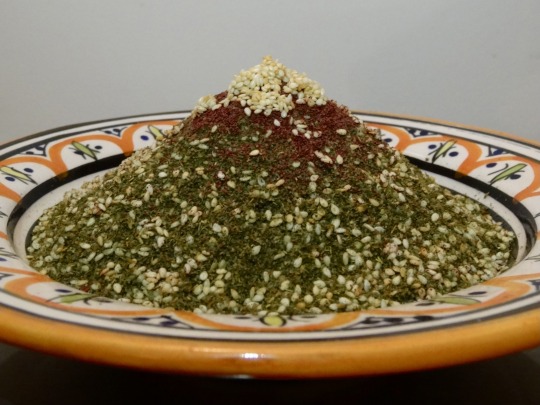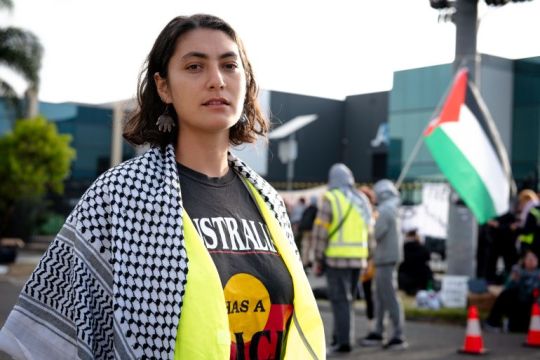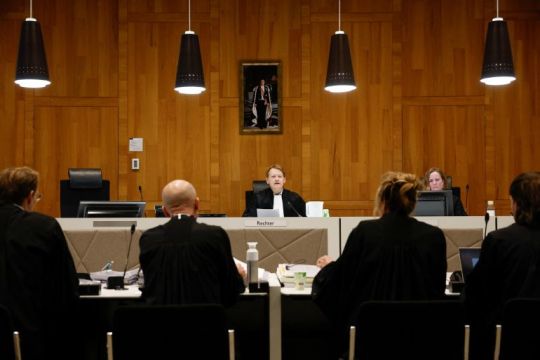#syrian model
Explore tagged Tumblr posts
Text

Jourdan Dunn backstage at prada s/s 2009 rtw Makeup Artist Pat McGrath Newest Cool
#newestcool#newest cool#jourdan dunn#prada#ss2009#2000s beauty#2000s aesthetic#pat mcgrath#pat mcgrath labs#runway makeup#runway beauty#makeup artist#british model#English model#Lebanese model#jamaican model#syrian model#ss 2009#ss09#ss 09
76 notes
·
View notes
Text


Magi Azarzar for Malka Jewelry, 2021 [source] Photographer: Yossi Michaeli
#jewelry#Magi Azarzar#jewellery#fashion#women#models#israelis#israeli actors#israeli women#מגי אזרזר#טאמבלר ישראלי#ישראבלר#israel#israeli#moroccan#syrian#jewish women#2021#jewish#jumblr#israeli models#model#gorgeousss
3 notes
·
View notes
Text


Sara Hamadeh - Syrian Eritrean American, 1996
#face claims central#face claims#female face claims#wattpad#african female models#middle eastern#african#eritrean#eritrean models#syrian#syrian models#character inspiration#beautiful girls#fancast#fan cast#poc female models
3 notes
·
View notes
Text
Omgggg I rly did work with sm beautiful girls….
#miss cece I miss Steff I miss jade ahhh all of the girls from the spa looked like models I’m just 🧍🏾♀️ but I appreciated them all omg#still need to hang out with cece one of these days#she looks like a model but she’s not stuck up about it and is a girls girl like to the truest form I should text her#when I get some money my sis and cece gotta hang out for sure steff needs to be there omg I’ll rly have to dress up then they both look#like models skjssjs#I used to like riding the train back home from work with steff especially since the redline is so unpredictable and dangerous#cece mentioned that she wanted my sis and I to meet her sister… I just found Cece’s insta and her sister is so cute awww#I remember her talking about her sister and where she came from and getting emotional because of her being Syrian and how her family had to#leave there to come to America… and she rec me a movie called ‘swimmers’ or something like that#I’m trying to remember but ah man#rambling#she was so sweet! I know that she’s planning on going to med school and that she has a millionaire bf (we met him at a work party and#played ping pong with his white ass) he was rly nice even tho I got told some… things about him from another coworker… it’s a lot omg…#cece is one of the nicest ppl that you’ll ever meet in rl tho like she’s extremely friendly and funny too#like she looks very sophisticated and like a millionaires model wife is the best way that I Can describe her lol#edit: the movie is called ‘the swimmers’#I still want to watch it
4 notes
·
View notes
Text
Kinda🇸🇾🇳🇱




1 note
·
View note
Text

[ID: A decorative orange ceramic plate with a pyramid of green herbs and sesame seeds, topped with deep red sumac and more sesame seeds. End ID]
زعتر فلسطيني / Za'tar falastinia (Palestinian spice blend)
Za'tar (زَعْتَر; also transliterated "za'atar," "zaatar" and "zatar") is the name of a family of culinary herbs; it is also the name of a group of spice blends made by mixing these herbs with varying amounts of olive oil, sumac, salt, roasted sesame seeds, and other spices. Palestinian versions of za'tar often include caraway, aniseed, and roasted wheat alongside generous portions of sumac and sesame seeds. The resulting blend is bold, zesty, and aromatic, with a hint of floral sourness from the sumac, and notes of licorice and anise.
Za'tar is considered by Palestinians to have particular national, political, and personal importance, and exists as a symbol of both Israeli oppression and Palestinian home-making and resistance. Its major components, olive oil and wild thyme, are targeted by the settler state in large part due to their importance to ecology, identity, and trade in Palestine—settlers burn and raze Palestinian farmers' olive trees by the thousands each year. A 1977 Israeli law forbade the harvesting of wild herbs within its claimed borders, with violators of the law risking fines and confiscation, injury, and even death from shootings or land mines; in 2006, za'tar was further restricted, such that even its possession in the West Bank was met with confiscation and fines.
Despite the blanket ban on harvesting wild herbs (none of which are endangered), Arabs are the only ones to be charged and fined for the crime. Samir Naamnih calls the ban an attempt to "starve us out," given that foraging is a major source of food for many Palestinians, and that picking and selling herbs is often the sole form of income for impoverished families. Meanwhile, Israeli farmers have domesticated and farmed za'tar on expropriated Palestinian land, selling it (both the herb and the spice mixture) back to Palestinians, and later marketing it abroad as an "Israeli" blend; they thus profit from the ban on wild harvesting of the herb. This farming model, as well as the double standard regarding harvesting, refer back to an idea that Arabs are a primitive people unfit to own the land, because they did not cultivate or develop it as the settlers did (i.e., did not attempt to recreate a European landscape or European models of agriculture); colonizing and settling the land are cast as justified, and even righteous.
The importance of the ban on foraging goes beyond the economic. Raya Ziada, founder of an acroecology nonprofit based in Ramallah, noted in 2019 that "taking away access to [wild herbs] doesn't just debilitate our economy and compromise what we eat. It's symbolic." Za'tar serves variously as a symbol of Palestinians' connection to the land and to nature; of Israeli colonial dispossession and theft; of the Palestinian home ("It’s a sign of a Palestinian home that has za’tar in it"); and of resistance to the colonial regime, as many Palestinians have continued to forage herbs such as za'tar and akkoub in the decades since the 1977 ban. Resistance to oppression will continue as long as there is oppression.
Palestine Action has called for bail fund donations to aid in their storming, occupying, shutting down, and dismantling of factories and offices owned by Israeli arms manufacturer Elbit Systems. Also contact your representatives in the USA, UK, and Canada.
Ingredients:
Za'tar (Origanum syriacum), 250g once dried (about 4 cups packed)
250g (1 2/3 cup) sesame seeds
170g (3/4 cup) Levantine sumac berries, or ground sumac (Rhus coriaria)
100g (1/2 cup) wheat berries (optional)
2 Tbsp olive oil
1 Tbsp aniseed (optional)
1/2 Tbsp caraway seeds (optional)
Levantine wild thyme (also known as Bible hyssop, Syrian oregano, and Lebanese oregano) may be purchased dried online. You may also be able to find some dried at a halal grocery store, where it will be labelled "زعتر" (za'tar) and "thym," "thyme," or "oregano." Check to make sure that what you're buying is just the herb and not the prepared mixture, which is also called "زعتر." Also ensure that what you're buying is not a product of Israel.
If you don't have access to Levantine thyme, Greek or Turkish oregano are good substitutes.
Wheat berries are the wheat kernel that is ground to produce flour. They may be available sold as "wheat berries" at a speciality health foods store. They may be omitted, or replaced with pre-ground whole wheat flour.
Instructions:
1. Harvest wild thyme and remove the stems from the leaves. Wash the leaves in a large bowl of water and pat dry; leave in a single layer in the sun for four days or so, until brittle. Skip this step if using pre-dried herbs.
2. Crumble leaves by rubbing them between the palms of your hands until they are very fine. Pass through a sieve or flour sifter into a large bowl, re-crumbling any leaves that are too coarse to get through.
Crumbling between the hands is an older method. You may also use a blender or food processor to grind the leaves.
3. Mix the sifted thyme with a drizzle of olive oil and work it between your hands until incorporated.
4. Briefly toast sumac berries, caraway seeds, and aniseed in a dry skillet over medium heat, then grind them to a fine powder in a mortar and pestle or a spice mill.
5. Toast sesame seeds in a dry skillet over medium heat, stirring constantly, until deeply golden brown.
6. (Optional) In a dry skillet on medium-low, toast wheat berries, stirring constantly, until they are deeply golden brown. Grind to a fine powder in a spice mill. If using ground flour, toast on low, stirring constantly, until browned.

Some people in the Levant bring their wheat to a local mill to be ground after toasting, as it produces a finer and more consistent texture.
7. Mix all ingredients together and work between your hands to incorporate.
Store za'tar in an airtight jar at room temperature. Mix with olive oil and use as a dipping sauce with bread.
2K notes
·
View notes
Text

Rigged model of a Roman merchant ship (151-250 AD), with sails, swan stern ornament and one figure, in glazed case (see Note), by Alfred Charles Jackson, High Salvington, Worthing, West Sussex, England, 1934-1935.
This model was based on a drawing of a Roman sailing ship of the 2nd century AD, prepared in the Science Museum by the use of contemporary reliefs, two from the mouth of the Tiber and two from the Syrian Coast. Ships such as this brought corn to Rome from the coast of Egypt and the Levant.
#naval artifacts#naval history#roman merchant ship#model#151-250 ad#early 20th century#ancient seafaring#age of steam#art
108 notes
·
View notes
Text

We will not forget, and we will not forgive. 16/9/1982 The 42nd anniversary of the Sabra and Shatila massacre.
Popular Front for the Liberation of Palestine: Telegram 42 Years Since the Sabra and Shatila Massacre, and the War of Genocide Continues
42 years have passed, and the Palestinian memory still holds the recollection of one of the most heinous crimes in modern human history. This massacre was committed by the gangs of the zionist occupation army and its collaborators in Lebanon against unarmed civilians, including Palestinian refugees, their Lebanese brothers, and dozens of others of various Arab and foreign nationalities. The massacre claimed the lives of more than 3,500 martyrs and left hundreds missing. The murderers committed the most brutal acts of killing and torture, cutting open the bellies of pregnant women, slaughtering children, women, and the elderly, and destroying homes over the heads of their inhabitants. For three consecutive days, the killers unleashed all their hatred and savagery, carrying out one of the most atrocious crimes against humanity. Its psychological impact remains present in the minds and hearts of all our Palestinian people and all the free and honorable people in the world. This horrific massacre occurred in the wake of the zionist invasion of Lebanon in 1982 and the steadfastness of the Palestinian and Lebanese resistance against the invading forces at the gates of Beirut for three months. During this period, the occupation failed to break through. They managed to enter only through deceit and Western-American collusion, which provided guarantees and promises to the Palestinian revolution forces to protect Palestinian refugees in Lebanon. Just days after the revolution forces departed, the Nazi gangs, under orders and support from the zionist occupation army led by war criminal Defense Minister Ariel Sharon and his Chief of Staff Rafael Eitan, stormed the camp inhabited by thousands of Palestinian refugees, poor Lebanese, Syrians, and others, where they proceeded to kill every living being they came across. Despite the brutality and savagery committed by the occupation army and its tools, the world turned a blind eye to prosecuting the criminal murderers and pursuing them as war criminals. The genocide being perpetrated against our people in the Gaza Strip proves that as long as criminals remain outside prison, they continue to accumulate crime, savagery, and fascism, sitting at the top of the racist zionist entity, which today poses a threat to all humanity and to all the free and honorable people in our nation and the world. The 42nd anniversary of the Sabra and Shatila massacre and the war of genocide led by the occupation army in partnership with and complicity of colonial Western American silence and official Arab betrayal against the Palestinian people continues to unfold. Today, our people in Gaza, the West Bank, and Al-Quds face a war of genocide and ethnic cleansing rarely seen in contemporary human history. The aim is to liquidate the Palestinian cause and implement the zionist-imperialist schemes to control the resources and wealth of the peoples of the region and colonial domination over the world. While the occupation army commits the most heinous crimes using the latest in American-zionist Western killing machines against an unarmed people who have only the will and faith in the justice of their cause and their right to a free and dignified life like all the peoples of the earth, the Palestinian people continue their resilience and steadfastness, writing the most wonderful epics of heroism and sacrifice, rejecting subjugation and surrender, and affirming their commitment to the option of resistance as the only path to liberation and return.
The Sabra and Shatila massacre 42 years ago served as a model and a lesson for our people and a warning to all who bet on American and Western guarantees and promises, which are synonymous with lies, hypocrisy, and conspiracy against peoples yearning for liberation from the yoke of occupation and enslavement. As we remember the horror of this massacre, we call on the International Criminal Court, the International Court of Justice, all international legal and human rights institutions, and all advocates of freedom and justice worldwide to continue exerting pressure by all means and methods until the war of genocide against our people in Gaza and the West Bank stops. We demand the prosecution of the leaders of the zionist entity and its army and their trial as war criminals so that the murderous criminals do not escape punishment, as did the perpetrators of the Sabra and Shatila massacre 42 years ago. On the anniversary of the Sabra and Shatila massacre, we renew our pledge to the martyrs of the ongoing massacre that our people will continue the path of struggle and resistance until all their usurped rights are restored, no matter how long it takes and regardless of the sacrifices made. The Popular Front for the Liberation of Palestine Central Media Department September 16, 2024
59 notes
·
View notes
Photo

Zenobia's Rebellion in the Historia Augusta
The Historia Augusta (Great History) is a Latin work of the 4th century CE that chronicles the lives of Roman emperors from 117-285 CE. Among the many stories related is the history of Zenobia of Palmyra and her challenge to Roman authority which was crushed by the emperor Aurelian in 273 CE.
Zenobia (b. 240 CE, death date unknown) was the wife of the Syrian governor and founder of the Palmyrene Kingdom, Odaenathus (r. 263-267 CE) who was killed (or intentionally assassinated) on a hunting trip in 267 CE, leaving his young son Vaballathus (b. 259 CE, d. c. 273 CE) as successor. As Vaballathus was too young to reign at the time, Zenobia became regent for their son and expanded the kingdom of Palmyra into an empire.
Her rise to power took place during the chaotic period known as the Crisis of the Third Century (235- 284 CE, also known as the Imperial Crisis) when the central government was weak and various Barracks Emperors succeeded each other rapidly in rule. In this climate, no one noticed - or had the power to deal with - Zenobia's steady expansion of power until Aurelian (r. 270 - 275 CE) came to power and ended her ambitions, drawing the Palmyrene Empire back under the control of Rome. The story of Zenobia's rise and fall is given in a number of ancient works and, among them, is the Historia Augusta.
Historicity of Historia Augusta
While today the Historia Augusta is recognized as largely fictional (some scholars even giving it the label of "historical fiction"), it was considered reliable history in its time and for many centuries afterwards. The famous historian Edward Gibbon (l. 1737-1794 CE) accepted it as an authentic record of the ancient Roman history and relied on it extensively in his six-volume work The History of the Decline and Fall of the Roman Empire which, like the Historia Augusta, is largely viewed as inaccurate in the modern day. Both of these works, however, had significant impact on the audiences who read them or heard them read.
Rather than regard Historia Augusta as largely fictional, it would perhaps be better to consider it in the same light as one would the genre of ancient Mesopotamian naru literature. Naru literature began appearing around the second millennium BCE in Mesopotamia and is characterized by stories featuring a well-known figure from the past (usually a king) as the main character in a quasi-historical tale, which either extolled the king's military prowess, told the tale of his life and reign, or, more often, used the king to exemplify the proper relationship between human beings and the gods. The main character (king) was always an actual historical figure, but the story was either fictional or slanted in a particular way in order to achieve a desired impression.
While the Historia Augusta is not as concerned with the gods as it is with the Roman emperors, the same paradigm applies in that the tales of the Roman rulers are given as "teaching moments" through which one learns what it means to be a good monarch or a poor one, a great man or a failure. The work is certainly biased in its presentation but is understood to have drawn on reliable historical sources for its narratives. The focus of these narratives, however, is always on how effective - or paltry - a given emperor's reign was understood to have been. This model applies not only to the Roman emperors, however, but also to their adversaries and, most notably, to the Queen Zenobia of Palmyra.
Continue reading...
86 notes
·
View notes
Text









WMAF couple # 19 - Syrian 🇸🇾 and Chinese 🇨🇳
Songyuxin Hitomi is a model and influencer. Her latest boyfriend, which was revealed in 2023, was a Syrian of French descent named Jan G. Metri
#wmaf#white male asian female#interracial#interracial love#interracial couple#international couple#international love#afwm#wmaw#awwm#white guys asian girls#white guy#asian girl#syrian#syrian guy#chinese#chinese girl#couple#couples#couple love#couple goals#mixed couple#syrian chinese#chinese syrian#🇸🇾🇨🇳#🇨🇳🇸🇾
63 notes
·
View notes
Text
Kakuhida Fic Recs!
Kay so I’ve read through pretty much everything on ao3 at this point, here are some of my faves in no particular order! This list is a work in progress. I hope you guys enjoy these as much as I have.
Resist(ance) by Hoppsindel
“I’m at a point now,-” Kakuzu continued, “-where I have to make a choice. And I think that whichever way I choose will end up badly for me.”
Tore took a deep breath and gazed out over the yard and the fields beyond. He was silent for a few moments, as if gathering his thoughts and trying to find the right words to say. Then he turned to look at his friend with a very serious expression on his old, wrinkled face.
“Think of your future, Kakuzu. And think carefully. Is this man you barely know, worth risking it all for?”
Shinobi Academy of Music by lilac_bramble
In the Shinobi Academy of Music, the faculty is divided and loyalties are tested as the head of the Keyboard School launches his own agency and record label, New Dawn Artists, creaming off all the most talented students before they even graduate. Caught up in the crossfire are Kakuzu, a Syrian pianist whose studies in his own country were cut short, first by imprisonment and then by war, and Hidan, a young tenor who has already managed to alienate nearly all the teaching staff, and the sole student in the entire Vocal School to be taken on by the prestigious but elusive vocal coach ‘Jashin’.
Follow Your Arrow by Weirdowithagun
Doctor Kakuzu Hoku had followed one straight and narrow path his entire life in the pursuit of his one and only love; Money. Dubbed the 'asshole of the century' he constantly finds himself having to get new secretaries via his old friend Kisame Hoshigaki, the friendly and easy-going human resources worker. Unfortunately for Kakuzu, Kisame makes a bit of an error sending him his latest employee while trying to help out one of his friends, a man by the name of Itachi Uchiha, who's new roommate has been having a hard time finding work due to his less than spectacular legal history.
Hidan San is 'desperately afraid of his own desires', and throughout his unfortunate life has never managed to find a place he could really call home, or people he could really call friends, until he accepts a job in a last-ditch effort to appease his roommate that ends up sticking him with the man he's come to know as Dr. Satan. After a string of self-realizations and mini-panic attacks, they find themselves suddenly on a completely new path that greets them both with surprise after surprise.
Nothing Lasts Forever by Fuladaris
Kakuzu takes the diagnosis better than Hidan does. In fact, while Hidan demands to know why there isn’t a cure, threatens and cajoles and curses and clutches his rosary, Kakuzu - says nothing at all.
In Limbs and Joints by orphan_account
Being in solitary confinement saves Hidan and Kakuzu from the most severe impacts of the sudden zombie hordes wreaking havoc all over the continent. With no one else but each other to rely on, they tread into this new world where they are newly free yet not without challenges.
Half Agony, Half Hope by Devilfangs
After a particularly bad fight, Kakuzu is left heavily injured. As Hidan treats him, he comes to terms with the changing nature of their relationship and what that means for the both of them.
Is This Life or Art? by lilac_bramble
AU Kakuzu/Hidan set against the tempestuous backdrop of the London art scene. Kakuzu is an investment banker with an extensive art collection and a difficult past; Hidan is a notorious life model unwillingly moving into the world of fashion.
They take to each other inexplicably and immediately, but can they keep it together as their friends' relationships deteriorate around them and Hidan just can't seem to stay out of trouble?
Dress Our Pleasure Up As Greed by 83dumplings
Hidan was an arrogant prick and a bloodthirsty zealot. He aroused his most base instincts – to hurt and let his temper loose on his body. So then, why was he treating him with such ardour and generosity?
Contains: a stay at an expensive ryokan, overall homoerotic delirium, accidental philosophical questions, also some Daoism out of nowhere.
AND as an honorable mention we have my fave Naruto fic…
The Moss by m_jeevas
On a night submersed in rain, Sasori picks up young “trimmigant” Deidara half a mile from the Garberville bus station out of sporadic pity. An isolationist and a scorpion amongst frogs that prefers to keep to the woods, Sasori is thrust into taking on this new apprentice in tandem with “The Suna Three”, his niece and nephews hiding out from their relatives for the season. Within the forests of the Emerald Triangle in Northern California, we explore a tale of mental illness, family, and the cutthroat world of marijuana’s black market.
This one is majorly gaalee and sasodei BUT kakuhida make their appearances. Seriously, it’s so good. Very lengthy and still ongoing but definitely worth a read.
#just a few of my faves#mostly aus if you’re into that#kakuhida#fic recs#I have more friend fics that I’d like to add at some point tbh#but these are what I have hoarded in my bookmarks
20 notes
·
View notes
Text
The formation of Hezbollah in the early 1980s was largely a response to multiple factors, but a critical trigger was Israel's invasion of Lebanon in 1982. However, the roots of Hezbollah's creation involve a broader context of regional conflicts, internal Lebanese strife, and external interventions.
Key Events Leading to the Formation of Hezbollah:
1. Lebanese Civil War (1975-1990):
Lebanon was embroiled in a brutal civil war from 1975, involving various sectarian groups, including Maronite Christians, Sunni and Shiite Muslims, Druze, and Palestinians. The war was exacerbated by external forces, including Syria, Israel, and the Palestinian Liberation Organization (PLO).
The Palestinian refugee population and the PLO, after being expelled from Jordan, established bases in southern Lebanon, launching attacks into Israel. In response, Israel repeatedly intervened militarily in Lebanon, creating deep tensions in the country.
2. Israeli Invasions of Lebanon:
Operation Litani (1978): Israel launched a military operation in southern Lebanon to push PLO forces north of the Litani River. This operation left a significant part of southern Lebanon occupied by Israeli forces and a militia known as the South Lebanon Army (SLA), a proxy for Israel.
Israeli Invasion of 1982: In June 1982, Israel launched a full-scale invasion of Lebanon, called “Operation Peace for Galilee.” The objective was to expel the PLO from Lebanon and create a buffer zone along Israel’s northern border. Israeli forces entered Beirut, bombarded the city, and eventually forced the PLO leadership to evacuate to Tunisia. However, the Israeli presence in southern Lebanon persisted after this operation, creating resentment and anger among many Lebanese, particularly the Shiite Muslim population.
3. The Shiite Muslim Response:
Lebanon’s Shiite Muslim community, historically marginalized and concentrated in the southern region of the country and the Bekaa Valley, bore the brunt of the Israeli occupation. Many Shiites felt alienated both by Israel's aggression and the internal Lebanese conflicts.
Iran, which had undergone an Islamic Revolution in 1979, saw an opportunity to export its revolutionary ideology and influence Lebanon’s Shiite population. The Iranian government, led by Ayatollah Khomeini, began sending advisors from its Islamic Revolutionary Guard Corps (IRGC) to Lebanon. These Iranian operatives helped train and organize local Shiite militias, which would eventually form Hezbollah.
4. The Formation of Hezbollah (1982-1985):
In the wake of the Israeli invasion and occupation, a group of Shiite clerics, militants, and intellectuals, inspired by Iran’s Islamic Revolution, coalesced to form Hezbollah (meaning “Party of God”). The group’s initial objective was to resist Israeli occupation in southern Lebanon and promote the establishment of an Islamic state based on the Iranian model.
Hezbollah’s founding document, released in 1985, called for the destruction of Israel, the withdrawal of all foreign forces from Lebanon, and the establishment of an Islamic state. Its military wing began organizing guerrilla warfare against Israeli forces and the SLA in southern Lebanon.
External Influences:
Iran: Iran played a significant role in funding, training, and arming Hezbollah in its early years. The Iranian government viewed Hezbollah as a key part of its regional strategy to spread its revolutionary ideals and oppose Israeli and Western influence in the Middle East.
Syria: Syria, which had a military presence in Lebanon during the civil war, also supported Hezbollah. The Syrian government saw Hezbollah as a useful ally in its ongoing conflict with Israel over the Golan Heights and other regional issues.
Summary:
The primary event that triggered Hezbollah’s formation was Israel’s 1982 invasion of Lebanon, which was itself a response to PLO attacks on northern Israel. However, Hezbollah's creation was also deeply tied to the broader context of the Lebanese Civil War, the marginalization of Lebanon’s Shiite community, and the influence of Iran’s Islamic Revolution. Hezbollah was initially formed as a resistance movement against Israeli occupation but has since evolved into a major political and military force in Lebanon.
Thus, while Israel’s invasion sparked the immediate conditions for Hezbollah's rise, the group's formation was also shaped by internal Lebanese dynamics and Iranian influence.
9 notes
·
View notes
Text
Australia challenged on ‘moral failure’ of weapons trade with Israel
Regular protests have been taking place outside Australian firms making crucial components for the F-35 fighter jet.
Melbourne, Australia – Israel’s continued assault on Gaza has highlighted a hidden yet crucial component of the world’s weapons manufacturing industry – suburban Australia.
Tucked away in Melbourne’s industrial north, Heat Treatment Australia (HTA) is an Australian company that plays a vital role in the production of F-35 Joint Strike Fighters; the same model that Israel is using to bomb Gaza.
Weekly protests of about 200 people have been taking place for months outside the nondescript factory, where heat treatment is applied to strengthen components for the fighter jet a product of US military giant Lockheed Martin.
While protesters have sometimes brought production to a halt with their pickets, they remain concerned about what’s going on inside factories like HTA.
“We decided to hold the community picket to disrupt workers, and we were successful in stopping work for the day,” Nathalie Farah, protest organiser with local group Hume for Palestine, told Al Jazeera. “We consider this to be a win.”
“Australia is absolutely complicit in the genocide that is happening,” said 26-year-old Farah, who is of Syrian and Palestinian origin. “Which is contrary to what the government might have us believe.”
More than 32,000 Palestinians have been killed since Israel launched its war in Gaza six months ago after Hamas killed more than 1,000 people in a surprise attack on Israel. The war, being investigated as a genocide by the International Court of Justice (ICJ), has left hundreds of thousands on the brink of starvation, according to the United Nations.

Nathalie Farah has been organising regular protests outside HTA’s factory [Ali MC/Al Jazeera]
According to Lockheed Martin, “Every F-35 built contains some Australian parts and components,” with more than 70 Australian companies having export contracts valued at a total 4.13 billion Australian dollars ($2.69bn).
Protesters have also picketed Rosebank Engineering, in Melbourne’s southeast, the world’s only producer of the F-35’s “uplock actuator system”, a crucial component of the aircraft’s bomb bay doors.
Defence industry push
In recent years, the Australian government has sought to increase defence exports to boost the country’s flagging manufacturing industry.
In 2018, former Prime Minister Malcolm Turnbull announced Australia aimed to become one of the world’s top 10 defence exporters within a decade. It is currently 30th in global arms production, according to the Stockholm International Peace Institute.
It is an aspiration that appears set to continue under the government of Anthony Albanese after it concluded a more than one-billion-Australian-dollar deal with Germany to supply more than 100 Boxer Heavy Weapon Carrier vehicles in 2023 – Australia’s single biggest defence industry deal.
Since the Gaza war began, the industry and its business relationship with Israel have come increasingly under the spotlight.
Last month, Deputy Prime Minister Richard Marles insisted that there were “no exports of weapons from Australia to Israel and there haven’t been for many, many years”.
However, between 2016 and 2023 the Australian government approved some 322 export permits for military and dual-use equipment to Israel.
The Department of Foreign Affairs and Trade’s own data – available to the public online – shows that Australian exports of “arms and ammunition” to Israel totalled $15.5 million Australian dollars ($10.1m) over the same period of time.
Officials now appear to be slowing the export of military equipment to Israel.
In a recent interview with Australia’s national broadcaster ABC, the Minister for International Development and the Pacific Pat Conroy insisted the country was “not exporting military equipment to Israel” and clarified this meant “military weapons, things like bombs”.
However, defence exports from Australia fall into two categories, items specifically for military use – such as Boxer Heavy Weapons vehicles for Germany – and so-called ‘dual use’ products, such as radar or communications systems, that can have both civilian and military uses.
[See the video embedded in the article]
Australia’s Department of Defence did not respond to Al Jazeera’s requests about whether the halt to defence exports to Israel also included dual-use items.
What is certain is that companies such as HTA and Rosebank Engineering are continuing to manufacture components for the F-35, despite the risk of deployment in what South Africa told the International Court of Justice in December amounted to “genocidal acts“.
In the Netherlands – where parts for the jet are also manufactured – an appeal court last month ordered the Dutch government to block such exports to Israel citing the risk of breaching international law.
The Australian government has also come under scrutiny for its lax “end-use controls” on the weapons and components it exports.
As such, while the F-35 components are exported to US parent company Lockheed Martin, their ultimate use is largely outside Australia’s legal purview.
Lauren Sanders, senior research fellow on law and the future of war at the University of Queensland, told Al Jazeera that the “on-selling of components and military equipment through third party states is a challenge to global export controls.
“Once something is out of a state’s control, it becomes more difficult to trace, and to prevent it being passed on to another country,” she said.
Sanders said Australia’s “end use controls” were deficient in comparison with other exporters such as the United States.
“The US has hundreds of dedicated staff – with appropriate legal authority to investigate – to chase down potential end-use breaches,” she said.
“Australia does not have the same kind of end-use controls in place in its legislation, nor does it have the same enforcement resources that the US does.”

The protesters say they will continue their action until manufacturing of F-35 components is stopped [Ali MC/Al Jazeera]
In fact, under legislation passed in November 2023, permits for defence goods are no longer required for exports to the United Kingdom and the US under the AUKUS security agreement.
In a statement, the government argued the exemption would “deliver 614 million [Australian dollars; $401m] in value to the Australian economy over 10 years, by reducing costs to local businesses and unlocking investment opportunities with our AUKUS partners”.
International law
This new legislation may provide more opportunities for Australian weapons manufacturers, such as NIOA, a privately owned munitions company that makes bullets at a factory in Benalla, a small rural town in Australia’s southeast.
The largest supplier of munitions to the Australian Defence Force, NIOA – which did not respond to Al Jazeera for comment – also has aspirations to break into the US weapons market.
At a recent business conference, CEO Robert Nioa said that “the goal is to establish greater production capabilities in both countries so that Australia can be an alternative source of supply of weapons in times of conflict for the Australian and US militaries”.
Greens Senator David Shoebridge told Al Jazeera that the government needed to “publicly and immediately refute the plan to become a top 10 global arms dealer and then to provide full transparency on all Australian arms exports including end users.
“While governments in the Netherlands and the UK are facing legal challenges because of their role in the global supply chain, the Australian Labor government just keeps handing over weapons parts as though no genocide was happening,” he said. “It’s an appalling moral failure, and it is almost certainly a gross breach of international law.”

The Dutch government has faced legal action over the export of F-35 fighter jet parts to Israel [File: Piroschka van de Wouw/Reuters]
Elbit has come under fire for its sale of defence equipment to the Myanmar military regime, continuing sales even after the military, which seized power in a 2021 coup, was accused of gross human rights violations – including attacks on civilians – by the United Nations and others.
Despite a recent joint announcement between the Australian and UK governments for an “immediate cessation of fighting” in Gaza, some say Australia needs to go further and cut defence ties with Israel altogether.
“The Australian government must listen to the growing public calls for peace and end Australia’s two-way arms trade with Israel,” Shoebridge said. “The Albanese government is rewarding and financing the Israeli arms industry just at the moment they are arming a genocide.”
Protests have continued both at the HTA factory in Melbourne and their premises in Brisbane, with organisers pledging to continue until the company stops manufacturing components for the F-35.
#palestine#free palestine#save palestine#gaza#free gaza#save gaza#world news#current events#war on gaza#gaza genocide#gaza strip#israel#gazaunderattack#israeli apartheid#israel palestine conflict#boycott israel#palestinian genocide#palestine genocide#stop the genocide#genocide#human rights#arms trade#weapons manufacturing#weapons technology
26 notes
·
View notes
Text
The junta have explicitly justified their coup as a response to the “continuous deterioration of the security situation” plaguing Niger and complained that it and other countries in the Sahel “have been dealing for over 10 years with the negative socioeconomic, security, political and humanitarian consequences of NATO’s hazardous adventure in Libya.” Even ordinary Nigeriens backing the junta have done the same.[...]
Only years [after enacting regime change] would a UK House of Commons Foreign Affairs Committee report publicly determine, echoing the conclusions of other post-mortems, that charges of an impending civilian massacre were “not supported by the available evidence” and that “the threat to civilians was overstated and that the rebels included a significant Islamist element” that carried out numerous atrocities of its own.
Sens. John McCain (R-Ariz.), Joe Lieberman (I-Conn.), and John Kerry (D-Mass.) all called for a no-fly zone. “I love the military ... but they always seem to find reasons why you can’t do something rather than why you can,” complained McCain. The American Enterprise Institute’s Danielle Pletka said it would be “an important humanitarian step.” The now-defunct Foreign Policy Initiative (FPI) think tank gathered a who’s who of neoconservatives to repeatedly urge the same. In a letter to then-President Barack Obama, they quoted back Obama’s Nobel Peace Prize speech in which he argued that “inaction tears at our conscience and can lead to more costly intervention later.”
Then-Secretary of State Hillary Clinton, reportedly instrumental in persuading Obama to act, was herself swayed by similar arguments. Friend and unofficial adviser Sidney Blumenthal assured her that, once Gaddafi fell, “limited but targeted military support from the West combined with an identifiable rebellion” could become a new model for toppling Middle Eastern dictators. Pointing to the similar, deteriorating situation in Syria, Blumenthal claimed that “the most important event that could alter the Syrian equation would be the fall of Gaddafi, providing an example of a successful rebellion.”[...]
Despite grave and often-stated reservations, Obama and NATO got UN authorization for a no-fly zone. Clinton was privately showered with email congratulations, not just from Blumenthal and Slaughter (“bravo!”; “No-fly! Brava! You did it!”), but even from then-Bloomberg View Executive Editor James Rubin (“your efforts ... will be long remembered”). Pro-war voices like Pletka and Iraq War architect Paul Wolfowitz immediately began moving the goalposts by discussing Gaddafi’s ouster, suggesting escalation to prevent a U.S. “defeat,” and criticizing those saying Libya wasn’t a vital U.S. interest. NATO’s undefined war aims quickly shifted, and officials spoke out of both sides of their mouths. Some insisted the goal wasn’t regime change, while others said Gaddafi “needs to go.” It took less than three weeks for FPI Executive Director Jamie Fly, the organizer of the neocons’ letter to Obama, to go from insisting it would be a “limited intervention” that wouldn’t involve regime change, to professing “I don’t see how we can get ourselves out of this without Gaddafi going.”
After only a month, Obama and NATO allies publicly pronounced they would stay the course until Gaddafi was gone, rejecting the negotiated exit put forward by the African Union. “There is no mission creep,” NATO Secretary General Anders Fogh Rasmussen insisted two months later. Four months after that, Gaddafi was dead — captured, tortured and killed thanks in large part to a NATO airstrike on the convoy he was traveling in.
The episode was considered a triumph. “We came, we saw, he died,” Clinton joked to a reporter upon hearing the news. Analysts talked about the credit owed to Obama for the “success.” [...] [In October 2011], Clinton traveled to Tripoli and declared “Libya’s victory” as she flashed a peace sign.
“It was the right thing to do,” Obama told the UN, presenting the operation as a model that the United States was “proud to play a decisive role” in. Soon discussion moved to exporting this model elsewhere, like Syria. Hailing the UN for having “at last lived up to its duty to prevent mass atrocities,” then-Human Rights Watch Executive Director Kenneth Roth called to “extend the human rights principles embraced for Libya to other people in need,” citing other parts of the Middle East, the Ivory Coast, Myanmar and Sri Lanka.[...]
Gaddafi’s toppling not only led hundreds of Tuareg mercenaries under his employ to return to nearby Mali but also caused an exodus of weapons from the country, leading Tuareg separatists to team up with jihadist groups and launch an armed rebellion in the country. Soon, that violence triggered its own coup and a separate French military intervention in Mali, which quickly became a sprawling Sahel-wide mission that only ended nine years later with the situation, by some accounts, worse than it started. According to the UN High Commissioner for Refugees, the majority of the more than 400,000 refugees in the Central Sahel were there because of the violence in Mali.
Mali was far from alone. Thanks to its plentiful and unsecured weapons depots, Libya became what UK intelligence labeled the “Tesco” of illegal arms trafficking, referring to the British supermarket chain. Gaddafi’s ouster “opened the floodgates for widespread extremist mayhem” across the Sahel region, retired Senior Foreign Service officer Mark Wentling wrote in 2020, with Libyan arms traced to criminals and terrorists in Niger, Tunisia, Syria, Algeria and Gaza, including not just firearms but also heavy weaponry like antiaircraft guns and surface-to-air missiles. By last year, extremism and violence was rife throughout the region, thousands of civilians had been killed and 2.5 million people had been displaced.
Things are scarcely better in “liberated” Libya today. The resulting power vacuum produced exactly what Iraq War critics predicted: a protracted (and forever close-to-reigniting) civil war involving rival governments, neighboring states using them as proxies, hundreds of militias and violent jihadists. Those included the Islamic State, one of several extremist groups that made real Clinton’s pre-intervention fear of Libya “becoming a giant Somalia.” By the 2020 ceasefire, hundreds of civilians had been killed in Libya, nearly 900,000 needed humanitarian assistance, half of them women and children, and the country had become a lucrative hotspot for slave trading. Today, Libyans are unambiguously worse off than before NATO intervention. Ranked 53rd in the world and first in Africa by the 2010 UN Human Development Index, the country had dropped fifty places by 2019. Everything from GDP per capita and the number of fully functioning health care facilities to access to clean water and electricity sharply declined. Far from improving U.S. standing in the Middle East, most of the Arab world opposed the NATO operation by early 2012.
8 Sep 23
96 notes
·
View notes
Text
Reference archived on our website (click to see this and more than 1,000 other open-access scientific studies! Updates daily!)
Animal study, but in my opinion, it shows the need to rest and recuperate during and after a covid infection.
Abstract Golden Syrian hamsters (Mesocricetus auratus) are a well-established animal model for human infections with severe acute respiratory syndrome coronavirus 2 (SARS-CoV-2) due to their susceptibility to SARS-CoV-2 infection, robust virus replication and pathological manifestations similar to human COVID-19 pneumonia. To investigate the physiological changes upon infection in this animal model, we explored the alterations in daily energy expenditure (DEE), water turnover, body mass, body temperature, and locomotor activity in non-infected and SARS-CoV-2 infected Golden Syrian hamsters for four days post SARS-CoV-2. DEE was measured using the doubly labelled water method, which allows for the accurate estimation of carbon dioxide production and, consequently, energy expenditure in animals. Additionally, we investigated total water intake (TWI), which comprises drinking water, preformed water in food, and metabolic water. Using intraperitoneally implanted data loggers, we also monitored body core temperature and locomotor activity in some of the animals. Here we provide evidence for infected hamsters exhibiting significantly lower DEE and TWI compared to non-infected animals. We also observed an increase in body weight in the non-infected animals, while infected animals experienced weight loss. Further, infected animals showed a significantly decreased body temperature, indicating a generally lowered metabolic rate.
#mask up#covid#pandemic#covid 19#wear a mask#public health#coronavirus#sars cov 2#still coviding#wear a respirator
7 notes
·
View notes
